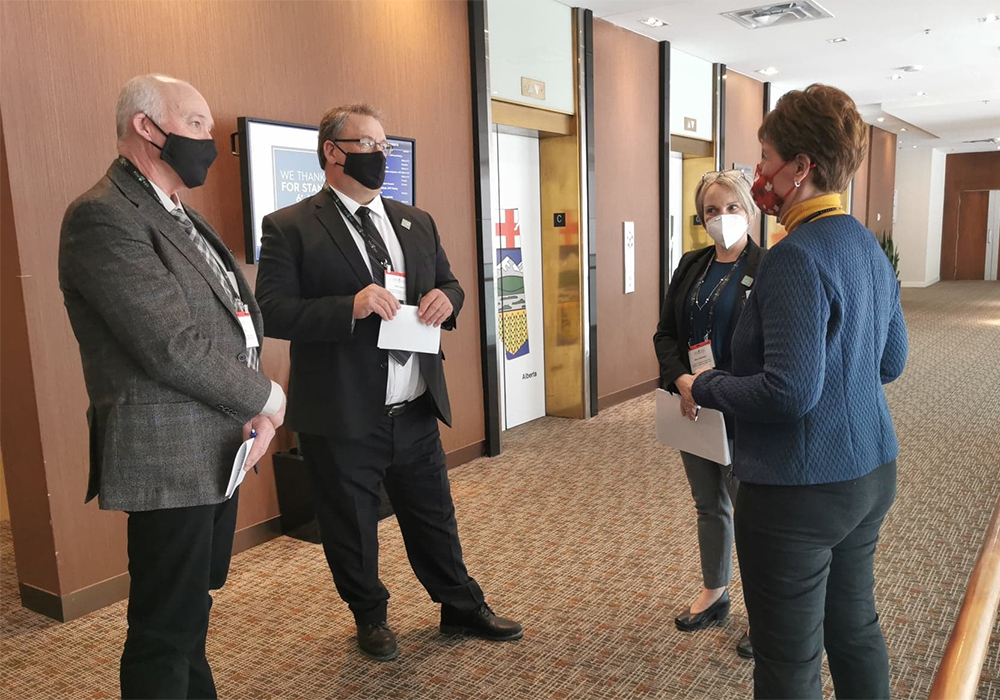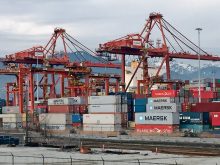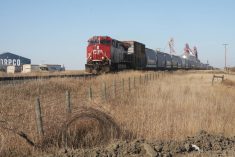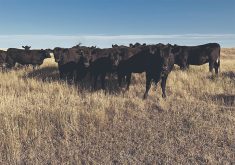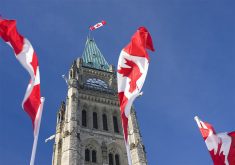Increased funding is at the top of the list for farmers as Ottawa looks for input on development of next policy framework
OTTAWA — The Canadian Federation of Agriculture is fine-tuning its submission to federal agriculture minister Marie-Claude Bibeau on what it thinks the next policy framework should look like.
Bibeau has been accepting suggestions from stakeholders since last summer and needs their thoughts by mid-March, ahead of the next federal-provincial-territorial meeting.
Ministers are expected to agree to the terms of the next five-year agreement at their meeting in Saskatoon in July, for implementation April 1, 2023.
Although the CFA document hasn’t been finalized, farmers are looking for ways to deal with the increasing risks and demands placed on them. Increasing funding to the framework, which sits at $3 billion, is critical, they said.
“We have an envelope of programs that really hasn’t seen significant increases in funding since the year 2000,” said second vice-president Todd Lewis. “We haven’t even kept up with inflation and yet we have more risks than ever. That’s all we talk about is climate change and how risky production is now and yet we have a program that’s supposed to be our backstop that hasn’t kept up with inflation, let alone recognize how much more difficult it is to farm.”
Messaging from governments that sustainability will be the common theme through the next framework led CFA delegates at last week’s annual general meeting to pass a resolution calling for an AgriGreen program similar to Quebec’s.
Lewis said this doesn’t mean the Quebec program would be adopted across the country but it recognizes the need for funding to address environmental demands on farmers.
AgriGreen would pay farmers who meet certain environmental requirements or implement practices, similar to environmental farm plans. It would offer support to farmers for the adjustments needed to cope with climate change, while increasing funding for agronomic research and innovation.
Keystone Agricultural Producers director Chuck Fossey said he supported the idea.
“I would suggest that the funding for anything dealing with the environment should be strictly federally funded, rather than cost-shared, because this is a program that will benefit all Canadians,” he said in speaking to the resolution.
Lewis said federal funding is part of CFA’s request around environmental goods and services because of the public benefits.
“The general overview of the farm organizations is that if we’re going to see this kind of direction the money should come from the federal government and not the provinces,” he said.
Delegates voted for enhanced, more responsive programs, increased flexibility in AgriInsurance to cover climate risks and improved AgriRecovery so it can respond more “dynamically.”
They want a larger government contribution to AgriInvest and a tax exemption on withdrawals used to improve farm productivity. And, they want a new separate program, with new money, for organic producers.
A resolution from l’Union des Producteurs Agricoles to increase AgriStability coverage to 85 percent of the reference margin without requiring all provinces to agree was narrowly approved.
KAP president Bill Campbell spoke against the motion, saying it would cause problems.
“We would have some provinces providing compensation and funding to an unlevel playing field. Some of the greatest challenges that we have with trade in our provinces is interprovincial trade,” he said. “The current formula with regard to ensuring a level playing field with AgriStability needs to be maintained in some form. There are avenues to change some components of AgriStability but I believe that we need to have somewhat a level playing field.”
But Marcel Groleau from UPA said this type of resolution would help the program evolve and could act as a lever to force provinces to negotiate.
Current CFA policy asks that the federal government pay its 60-percent share of increasing the AgriStability compensation rate from 70 to 80 percent in those provinces that agree to do so. The refusal of the prairie provinces to agree to pay their 40 percent has held up money for the others.
Lewis said he wasn’t sure how much room there is for governments to consider new programs at this point. Officials have to complete their work on the new framework by May so it can be signed in July.
He said the resolutions passed at the AGM will go into the mix but it’s up to the provinces and Ottawa to make the decisions.
He added that farmers are in a precarious position given that inflation and interest rates are on the rise. Commodity prices are also up, Lewis agreed, but the risk management programs still have to cover the economic risk.
“It’s an insurance program. It’s the backstop,” he said. “On one hand if they’re not enhancing risk management and on the other side you’ve got to decrease your carbon footprint because of environmental risks that the farmers are fighting…it’s a frustrating position.”


